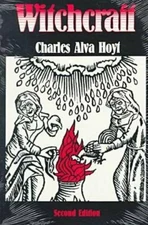This day in history: Joan of Arc was born on this day in 1412. Joan of Arc, aka "The Maid of Orléans", is considered a heroine of France for her role during the Lancastrian phase of the Hundred Years' War. Joan said that she received visions of the archangel Michael, Saint Margaret, and Saint Catherine of Alexandria instructing her to support Charles VII and recover France from English domination late in the Hundred Years' War. The as-yet-unanointed King Charles VII sent Joan to the siege of Orléans as part of a relief army. She gained prominence after the siege was lifted only nine days later. Several additional swift victories led to Charles VII's consecration at Reims. This long-awaited event boosted French morale and paved the way for the final French victory at Castillon in 1453.
On 23 May 1430, she was captured at Compiègne by the Burgundian faction, a group of French nobles allied with the English. She was later handed over to the English and put on trial by the pro-English bishop, Pierre Cauchon, on a variety of charges. After Cauchon declared her guilty, she was burned at the stake on 30 May 1431 at the young age of 19.
In 1456, an inquisitorial court authorized by Pope Callixtus III examined the trial, debunked the charges against her, pronounced her innocent, and declared her a martyr. In the 16th century she became a symbol of the Catholic League, and in 1803 she was declared a national symbol of France by the decision of Napoleon Bonaparte. She was beatified in 1909 and canonized in 1920. Joan of Arc is one of the nine secondary patron saints of France.
Joan of Arc has remained a popular figure in literature, painting, sculpture, and other cultural works since the time of her death...however, there are alternative theories about Joan of Arc.
In 1819, Pierre Caze published La Vérité sur Jeanne d'Arc, which argued that Joan of Arc was the bastard daughter of the Queen, Isabeau of Bavaria, and Duke Louis of Orléans. According to Caze's reasoning, the queen hid their daughter in the countryside with the d'Arc family. When Joan of Arc met the future King Charles VII she would have given him a private sign that she was his half-sister. It has been theorized that the coat of arms he later granted her included a sword as a baton of bastardy.
Also, several women claimed to be Joan of Arc after the execution date. The most successful was Jeanne (or Claude) des Armoises. Claude des Armoises married the knight Robert des Armoises and claimed to be Joan of Arc in 1436. She gained the support of Joan of Arc's brothers. She carried on the charade until 1440, gaining gifts and subsidies. One chronicle states, "In this year there came a young girl who said she was the Maid of France and played her role so well that many were duped by her, and especially the greatest nobles." Claude finally confessed she was a fraud after Charles VII asked her to repeat the secret which the real Joan had revealed to him when they first met at Chinon in March 1429, which Claude could not do. Some modern authors attempt to revive this claim by asserting that some other victim was substituted for Joan of Arc at the stake.
Dr. Cobham Brewer wrote in his nineteenth century volume Brewer's Dictionary of Phrase and Fable: "M. Octave Delepierre has published a pamphlet, called Doute Historique, to deny the tradition that Joan of Arc was burnt at Rouen for sorcery. He cites a document discovered by Father Vignier in the seventeenth century, in the archives of Metz, to prove that she became the wife of Sieur des Armoise, with whom she resided at Metz, and became the mother of a family. Vignier subsequently found in the family muniment-chest the contract of marriage between 'Robert des Armoise, knight, and Jeanne D'Arcy, surnamed the Maid of Orleans.' In 1740 there were found in the archives of the Maison de Ville (Orléans) records of several payments to certain messengers from Joan to her brother John, bearing the dates 1435, 1436. There is also the entry of a presentation from the council of the city to the Maid, for her services at the siege (dated 1439). M. Delepierre has brought forward a host of other documents to corroborate the same fact, and show that the tale of her martyrdom was invented to throw odium on the English."
Graeme Donald argues that much of the story of Joan of Arc is a myth. He says there are no accounts or portraits of Joan of Arc's victories during her time period, nor is she mentioned as a commander of the French army by Chastellain. He also states that the most definitive work of her life was written by Jules Quicherat between 1841 and 1849, after he discovered a cache of documents relating to her trial. Donald argues that she was most likely not burned at the stake.
In 1921, anthropologist Margaret Murray argued that Joan was correctly identified as a witch by the religious authorities who condemned her to death, but that what they called witchcraft was, in fact, a survival of the pagan "old religion" of ancient Europe. Murray claimed that Joan and Gilles de Rais were leaders of a pagan witch-cult that was a rival to the Catholic church. Joan was the "incarnate God" of a cult derived from the worship of the virgin huntress Diana.



No comments:
Post a Comment